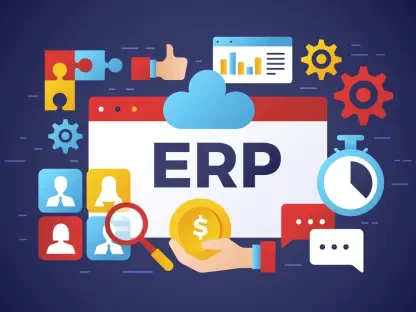In today’s fast-paced business environment, companies are grappling with a staggering array of software choices, with over 30,000 SaaS products available, each promising to streamline operations or boost productivity. This overwhelming selection often leaves decision-makers at a crossroads: should they opt for integrated SaaS platforms that connect multiple functionalities within a single ecosystem, or invest in standalone tools designed for specific, often niche, tasks? The stakes are high, as the right choice can significantly impact workflow efficiency, cost management, and long-term scalability. This comparison dives deep into the nuances of SaaS integration and standalone tools, exploring their strengths, limitations, and ideal use cases to help businesses navigate the complex digital landscape.
Understanding SaaS Integration and Standalone Tools
SaaS integration refers to platforms or ecosystems where multiple tools and functionalities are interconnected, allowing seamless data flow and communication between applications. Think of comprehensive suites like Microsoft 365 or Google Workspace, where email, document editing, and communication tools work in tandem, reducing the need for external software. These systems are designed to create a unified experience, often hosted in the cloud, ensuring that updates and access are consistent across all components.
Standalone tools, by contrast, are independent software solutions built for specific purposes, such as Zoom for video conferencing or Klaviyo for e-commerce email automation. These tools operate outside larger ecosystems, focusing on delivering specialized features without inherent connections to other applications. Their purpose lies in addressing targeted needs with depth, often excelling in areas where integrated platforms may offer only surface-level functionality.
The relevance of both approaches in modern business cannot be overstated. SaaS integration plays a pivotal role in tech stack consolidation, a growing trend as companies aim to reduce tool sprawl and enhance operational efficiency. Standalone tools, however, remain vital for industries or teams requiring precision and customization that broader platforms might lack. Across sectors like marketing, education, and enterprise management, the choice between these models shapes how businesses scale, adapt, and compete in an increasingly digital world.
Key Comparisons Between SaaS Integration and Standalone Tools
Workflow Efficiency and Seamlessness
One of the most significant advantages of SaaS integration is its ability to streamline workflows by connecting disparate functions within a single environment. For instance, Microsoft Teams integrates effortlessly with Office 365, enabling users to transition from chat to document collaboration without switching apps. This interconnectedness minimizes friction, reduces context-switching, and boosts productivity by keeping everything in one place.
Standalone tools, while often powerful in their domain, can disrupt workflow due to their isolated nature. Using Zoom for meetings alongside separate tools for file sharing or task management often requires manual data transfers or multiple logins, creating operational bottlenecks. These interruptions can hinder team collaboration, especially in fast-moving projects where time is critical.
The contrast in seamlessness highlights a broader implication: integrated solutions are better suited for cohesive operations across departments, whereas standalone tools risk creating silos unless paired with additional integration middleware like Zapier. Businesses must weigh the trade-off between specialized performance and the ease of a unified system when designing their tech stack.
Cost-Effectiveness and Scalability
From a financial perspective, SaaS integration often proves more cost-effective, especially for organizations seeking comprehensive solutions. Bundled ecosystems like Google Workspace provide a suite of tools—email, storage, and productivity apps—at a consolidated price, reducing the need for multiple subscriptions. This pricing model can yield significant savings for larger teams or growing enterprises.
Standalone tools, such as HubSpot for CRM or Dropbox for file storage, frequently come with individual subscription fees that add up when multiple tools are required. While they may offer competitive pricing for small teams with niche needs, the cumulative cost can become prohibitive as usage expands. This fragmented expense structure often lacks the economies of scale found in integrated platforms.
Scalability further differentiates the two approaches. Integrated SaaS platforms typically support growth through modular add-ons or tiered plans, accommodating expanding teams or evolving needs with ease. Standalone tools, however, may struggle to adapt beyond their core function, sometimes requiring businesses to adopt additional software, which compounds complexity and cost over time.
User Experience and Specialization
When it comes to user experience, integrated SaaS platforms prioritize simplicity and accessibility across their suite of tools. Platforms like Notion combine project management, note-taking, and databases into a single interface, reducing the learning curve for users who value a consistent design language. This broad usability appeals to teams seeking an all-in-one solution without extensive training.
Standalone tools often shine in specialization, offering tailored features that cater to specific industries or workflows. Klaviyo, for example, provides advanced automation for e-commerce marketing, outpacing the email capabilities of integrated suites in depth and customization. Such tools are indispensable for businesses where niche functionality directly impacts outcomes, even if they require more effort to master.
The trade-off between the two lies in breadth versus depth. Recent data on SaaS trends indicates a growing preference for tools that balance usability with targeted features, with integrated platforms gaining traction for their cohesive experience, while standalone options retain loyalty in sectors demanding precision. Companies must assess whether a streamlined interface or specialized expertise aligns more closely with their operational goals.
Challenges and Limitations of Each Approach
SaaS integration, despite its many benefits, comes with notable challenges that can affect long-term flexibility. A primary concern is dependency on a single ecosystem, which can lead to vendor lock-in, making it difficult to switch providers without significant data migration costs. Additionally, customization options within these platforms are often limited, restricting businesses from tailoring solutions to unique needs.
Another hurdle with integrated systems is the complexity of managing a centralized data environment. While the interconnected nature enhances efficiency, it also heightens data security risks, as a breach in one component could compromise the entire suite. This vulnerability necessitates robust security protocols, which may add to operational overhead for companies without dedicated IT resources.
Standalone tools present their own set of limitations, particularly around compatibility and management. Without native integration, these tools often require manual effort or third-party connectors to sync with other systems, increasing the risk of errors. Furthermore, adopting multiple standalone applications can lead to higher long-term costs and administrative burdens, especially as teams scale and training needs multiply across disparate platforms.
Conclusion: Choosing the Right Path for Your Business
Reflecting on the distinctions between SaaS integration and standalone tools, it becomes clear that efficiency, cost, and specialization stand as the defining factors in the decision-making process. Integrated platforms emerge as champions of streamlined operations and budget-friendly scalability, while standalone tools carve out their place by delivering unmatched depth in specific domains. Each approach carries its own set of trade-offs, from vendor dependency in ecosystems to compatibility issues in isolated software.
Looking ahead, businesses are encouraged to take deliberate steps in aligning their technology choices with strategic objectives. A thorough audit of current workflows, team dynamics, and financial constraints proves essential in identifying whether an integrated suite or a specialized tool better serves their needs. By mapping out long-term goals and anticipating scalability demands, companies position themselves to build a tech stack that not only addresses immediate challenges but also adapts to future shifts in the digital landscape.









